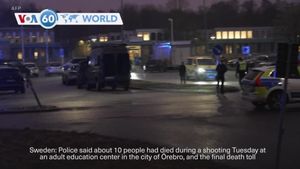The race for the 2025 Polish presidential election is heating up, with recent polling data showing significant competition between the major political parties. According to the latest survey conducted by the IBRiS Institute for Onet from January 31 to February 2, 2025, the Civic Coalition (Koalicja Obywatelska, KO), led by Donald Tusk, is currently leading slightly over the ruling Law and Justice party (Prawo i Sprawiedliwość, PiS).
The survey reveals KO garnering 29.3% of support, just edging out PiS, which stands at 27.4%. The far-right Konfederacja follows with 10.9%, marking substantial gains, whereas Third Way (Trzecia Droga) and the Left (Lewica) hold 9.6% and 7.7%, respectively. Meanwhile, the Razem party is trailing with only 0.9% support.
This polling data not only highlights the competitive nature of the upcoming elections but also shows the fragility of each party’s lead. Most intriguingly, 13.9% of participants remain undecided, meaning their decisions could sway the final results significantly. According to IBRiS, up to 54% of respondents have expressed readiness to vote, indicating strong electoral engagement.
Notably, the simulation of seat distribution based on these numbers suggests the Civic Coalition, along with the Third Way and the Left, could secure 234 mandates, providing the opposition with the majority it needs to challenge the current government effectively. Conversely, PiS and Konfederacja would hold 226 seats, reflecting losses for both parties compared to the previous parliamentary election results.
On top of this, the scenario is loaded with historical parallels; the last time both leading parties failed to cross the 30% threshold was back in October 2005, highlighting broader shifts within the electorate.
The IBRiS poll is significant not just for indicating current support but also for what it suggests about the stability of both major parties. KO’s support remains below the symbolic 30% threshold which has traditionally been considered its ceiling, echoing past challenges within the coalition. For PiS, with its 27.4%, this points to what has been termed their "iron floor"—the steadfast base support the party seems to maintain irrespective of the political climate.
The Koalicja Obywatelska is seen to be experiencing what is referred to as returning under the “glass ceiling,” where consistently achieving above this threshold has historically proven challenging. The dynamics of these shifting numbers point to the need for both parties to strategize effectively to regain ground with undecided voters, whose choices could very well dictate the elections' outcome.
Meanwhile, the energy within the electoral atmosphere can be felt as various campaigns heat up, with officials and supporters rallying for increased visibility to engage those undecided segments. With voter turnout being key, 83% of respondents have indicated they are likely to participate, framing future electoral exercises as potentially historic and transformative.
Rafał Trzaskowski, discussed widely as KO's leading presidential candidate, currently leads with 37.3% if the elections were held today, followed by Karol Nawrocki from PiS at 23.9%. This data provides insights not only on party strategies but also on the candidates' personal brands and their resonance with voters.
The impact of the undecided voters cannot be overstated, as their final decisions may tip the balance of power within the Sejm. Pollsters and analysts alike are keeping their eyes peeled for any shifts, as the current polarization points to not just competitive elections but also potentially significant changes within Polish governance.
Finally, the enthusiastic political engagement witnessed now sets the stage for what promises to be closely contested elections. Both KO and PiS will intensify their outreach, not just to maintain their bases but also to sway the undecided voters whose preferences remain fluid, reflecting the uncertainty of the times. Given the demonstrated willingness to vote among the populace, this election could symbolize more than just party loyalties—it may represent the broader ideological currents shaping Poland’s future.



